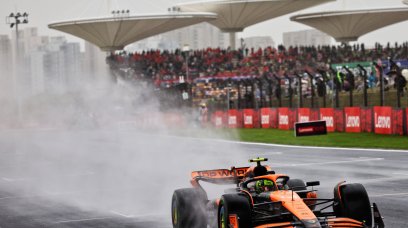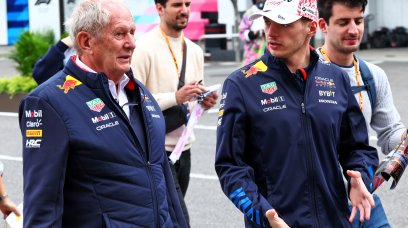Continuing a series that shines the light on some of the biggest changes and hot topics for F1's 'new era' of competition, Dieter Rencken runs through the potential effects of the budget cap, which was introduced in 2021 and tightens again this year.
F1's budget cap comes into play
Under consideration even before Liberty Media gained control of F1's rights in 2017, the budget cap was introduced for 2021 and thus directly affects the design of the 2022 cars. The cap restricts performance-critical spend to level the playing field, with three main areas targeted: car design/development, component manufacture and testing/race operations. Spend in these areas was restricted to $145m, reducing by $5m in each 2022/3. Speaking ahead of the 2022 season, McLaren Racing CEO Zak Brown welcomed the cap as outlined in F1's financial regulations, stating: "With the spending limit reducing to $140m this year and $135m next, the new financial regulations present us - and the sport as a whole - with a fairer framework to compete by reducing the inevitable advantage of the biggest-spending and best-resourced teams." Exclusions to the cap are (presently) power units, marketing/hospitality, team travel - to prevent cutbacks on accommodation and flight classes - and car demonstrations and heritage (museum) operations. Crucially, despite drivers being major performance differentiators, their stipends are also (currently) excluded from the cap, in turn enabling better-funded teams to gain distinct advantages in this quarter. Equally, the top three salaries paid to team personnel are excluded, so superstar designers or strategists can still make a massive difference. Still, the cap redresses most imbalances, although such are the facilities and operational advantages accrued by major teams over the years that, according to AlphaTauri team boss Franz Tost and Haas Team Principal Guenther Steiner, momentum will carry them for three years, at least.
Challenges for F1's big spenders
Given the extent of the cutbacks, major teams found it tough to comply, given they were geared to race on budgets around half their previous levels. Said Ferrari’s Team Principal Mattia Binotto: "With the financial regulations we cut some development and cut parts of our organisation. When you've got a cap, you need to limit yourself," adding the team took a decision to cease aerodynamic development of their 2021 car in April. At the other end of the spectrum, Alfa Romeo Team Principal Fred Vasseur believes "budget caps changed the mindset of F1, forcing the sport into efficiency mode. We have a [finite] budget and have to make the best use of it. It's more the reality of business, back to the reality of life. You have to anticipate much more than before – what will the impact of developments be in terms of lap time; what issues could arise?" While Tost is confident his team won't be adversely affected, given that they have recently operated at levels similar to the budget cap, an unknown factor is accident damage, which could in turn reduce development. "The only thing [that] could cause problems are some very big accidents - expensive accidents - but we have some money on the side for this," he says. Teams operating at the absolute limit of the cap could, though, find themselves with very tough choices should the unexpected occur. By the same token, accident damage could affect design choices for next year's cars as the cap covers all spend incurred during a season. Capital expenditure is also restricted, thus preventing wealthier teams from constantly upgrading their facilities, further reducing the gap between rich and poor.
Strict cuts that could change the competitive order
F1 financial regulations demand that all teams submit full reporting documentation pertaining to their full operating years by 31 March of the subsequent year. In addition, the FIA reserves the right to impose spot-checks at any point. Out-sourced goods or services, whether obtained from another team or outside supplier, are subject to checks to ensure they are booked at 'notional values' to prevent teams from indirectly profiting from transfers to/from associated entities. Thus, Red Bull could not supply sister team AlphaTauri with gearboxes for a dollar or Mercedes have foundry work done by parent Daimler at half price. However, the acid test will be the penalties applied should teams be found in breach of any provisions. These range from reprimands through monetary fines, time penalties and race suspensions to exclusion from the championship, with nominated executive(s) potentially in line for bans. Crucially, though, no prescribed tariffs exist – as per sporting and technical contraventions: breaches will be subject to penalties handed down on a discretionary basis by the adjudication committee to prevent teams trading off lap time gains in return for specified penalties. So no clever games with budgets, then. All this potentially points to some major shakeups to F1's pecking order, with the usual front-runners being cut back, while it remains business as usual for the rest of the field. Even if the historic status quo remains the overall gap is likely to field is likely to narrow substantially. As a bonus, the cost cuts mean a number of previously beleaguered teams have moved off the endangered list into a profit situation. What's not to like?
Most read





















